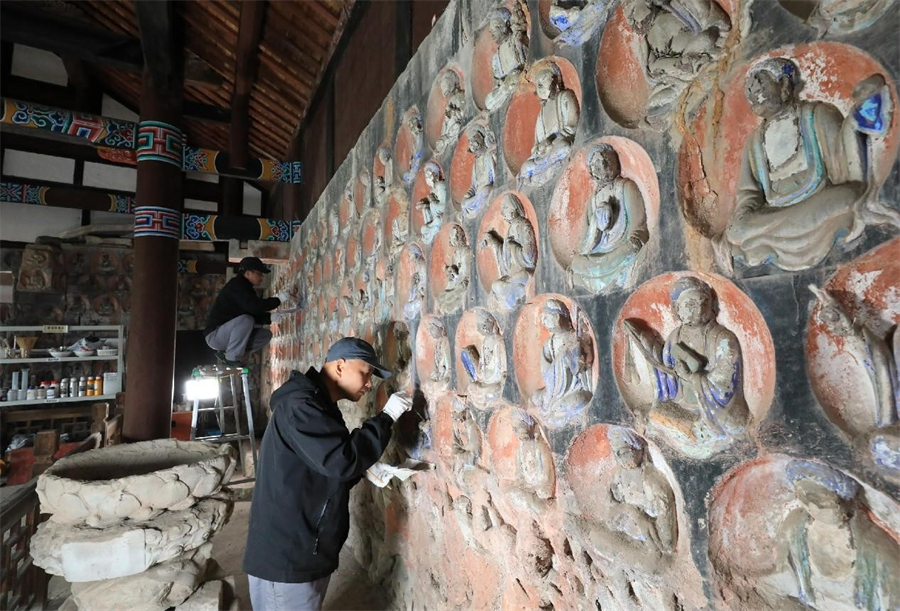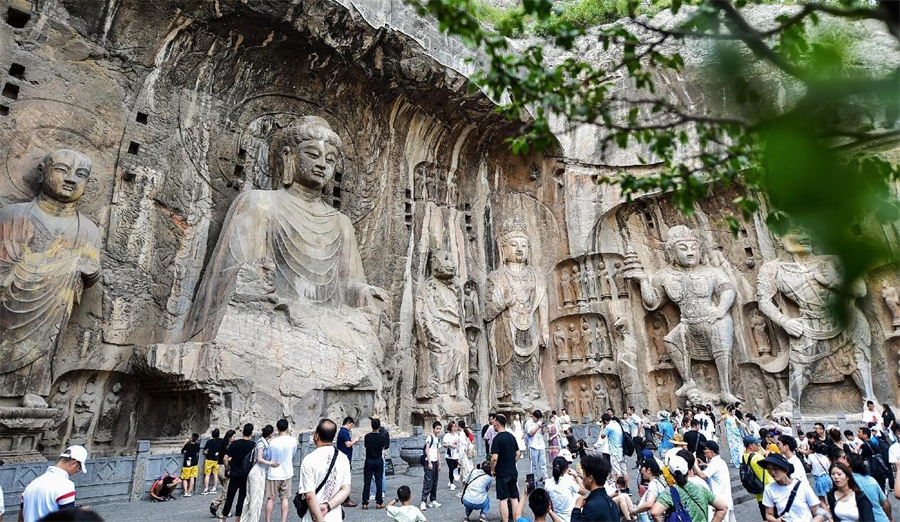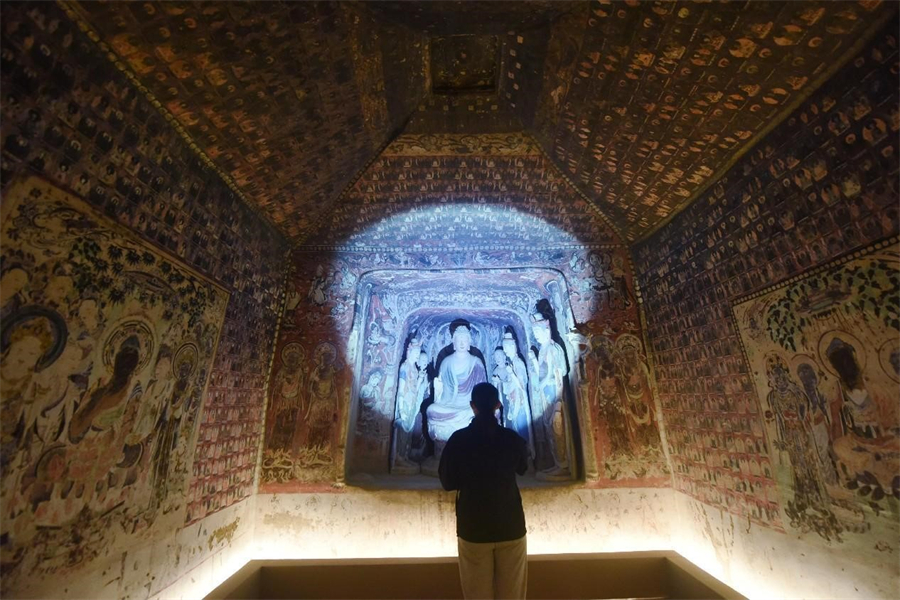China takes multiple measures to conserve cave temples

Staff members clean statues of the Dazu Rock Carvings in southwest China's Chongqing municipality. [People's Daily Online/Huang Shu]
Cave temples house various types of cultural relics, including grottoes, cliffside sculptures, cave shrines, and murals.
Chinese cave temples are grand in scale, widely distributed and well-organized, carrying profound connotations. They manifest the splendid culture of the Chinese nation and witness the mutual learning and exchanges between the Chinese civilization and other ancient civilizations.
UNESCO World Heritage sites of Chinese cave temples include the Mogao Grottoes, Dazu Rock Carvings, Longmen Grottoes, and Yungang Grottoes.
According to a 2021 survey, China is home to 2,155 cave temples and 3,831 cliffside sculptures, totaling 5,986.
The conservation of cave temples has always been a focus of China's efforts to protect cultural heritage. Relevant experts noted that China carried out comprehensive protection of cave temples between the 1980s and the early 21st century, during which a large batch of important caves were rescued.
At the same time, comprehensive conservation was carried out with a focus on sand control, mural restoration, seepage fissure grouting, and mural digitization. The Mogao Grottoes in Dunhuang, northwest China's Gansu province was a representative.

Tourists visit the Longmen Grottoes in Luoyang, central China's Henan province. [People's Daily Online/Huang Zhengwei]
In the recent decade, the research on the damage mechanisms of cave temples, survey technology, conservation and reinforcement technology, and technology for display have all advanced rapidly. China has gradually established a multi-disciplinary joint research model, while science and technology have become prominent to support and guide cave temple conservation.
According to Su Bomin, president of the Dunhuang Academy, over the years, a number of projects have been carried out in the Mogao Grottoes, including grotto preservation, cliff reinforcement, and environmental remediation. So far, about 7,000 square meters of murals have been restored, digital collections have been completed for 290 caves, and a comprehensive monitoring and early warning system has been established.
The implementation of these conservation projects has fundamentally improved cultural relics preservation in the Mogao Grottoes, Su said.
The technological development not only protects cave temples, but also provides new displaying methods.
For example, the Mogao Grottoes and Longmen Grottoes have both launched digital platforms to showcase the caves with advanced technologies and multimedia means, thus improving service quality and user experience, and making cultural relics "movable."
The conservation of cave temples has long been an important topic of concern and research in the international cultural heritage community. Over the years, China has had beneficial cooperation on archaeological excavation and conservation research of cave temples with professional institutions in countries including the UK, Australia, and Italy.

A tourist visits a 3D-printed recreation of Cave 57 of the Mogao Grottoes at the Zhejiang Art Museum in Hangzhou, east China's Zhejiang province. [People's Daily Online/Long Wei]
The Academy of Dazu Rock Carvings has actively pursued international cooperation on cultural heritage conservation. It has not only engaged in extensive exchanges with Italian cultural heritage conservation institutions, but also launched projects to protect the cliffside sculptures, laying a solid foundation for the long-term preservation and study of Dazu Rock Carvings.
Due to the uniqueness of cave temples in terms of their surrounding environment, composition, and construction materials, they are more sensitive to climate change than other types of cultural heritage.
The continuously intensifying climate change will not only increase the risk of damage or destruction to cultural relics, but also accelerate the degradation and loss of historical and cultural information preserved within them. This poses new tasks and challenges for conservation.
According to experts, since the 21st century, China's philosophy of cultural heritage conservation has integrated with international concepts, emphasizing scientific assessment of cultural heritage values, emergency protection and preventive protection. There is also a focus on safeguarding and managing the environment surrounding heritage sites, with particular attention given to the influence of meteorological factors on cave temples.
The preservation and utilization of cave temples involves humanities disciplines such as archaeology and history, as well as natural sciences including engineering geology, materials science, and biology. Therefore, in cave temple conservation and studies, various scientific and technological means shall be employed, with an emphasis on multi-disciplinary joint research and the research base construction.
The experience China has gained in cave temple conservation has been affirmed by many foreign experts. Abdul Samad, director of the Directorate of Archaeology and Museums of Khyber Pakhtunkhwa, Pakistan, said that China's work on cultural relics conservation is extremely prudent and professional, and the country's efforts to advance digital archiving, adaptive use, and relic restoration are particularly impressive.
























